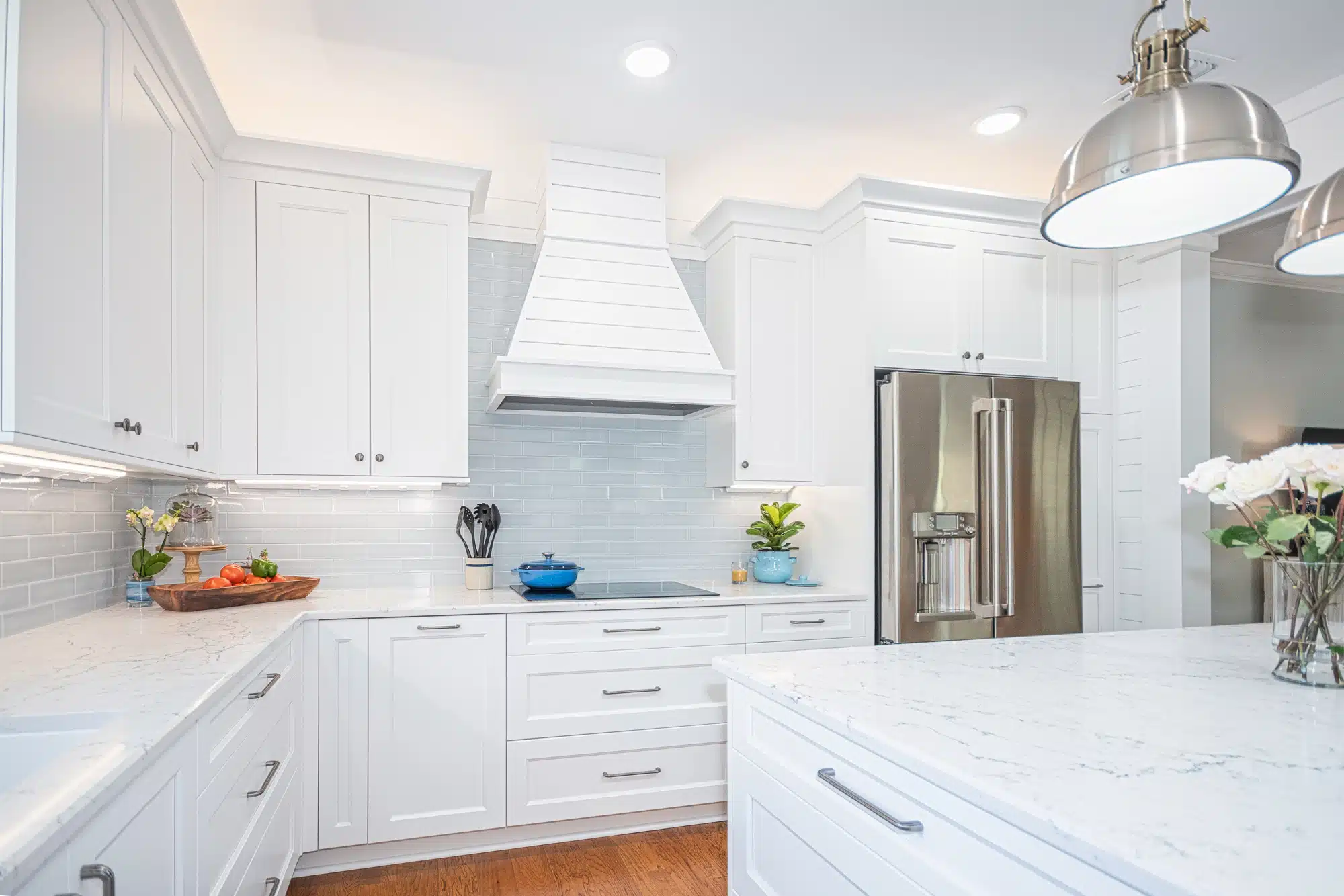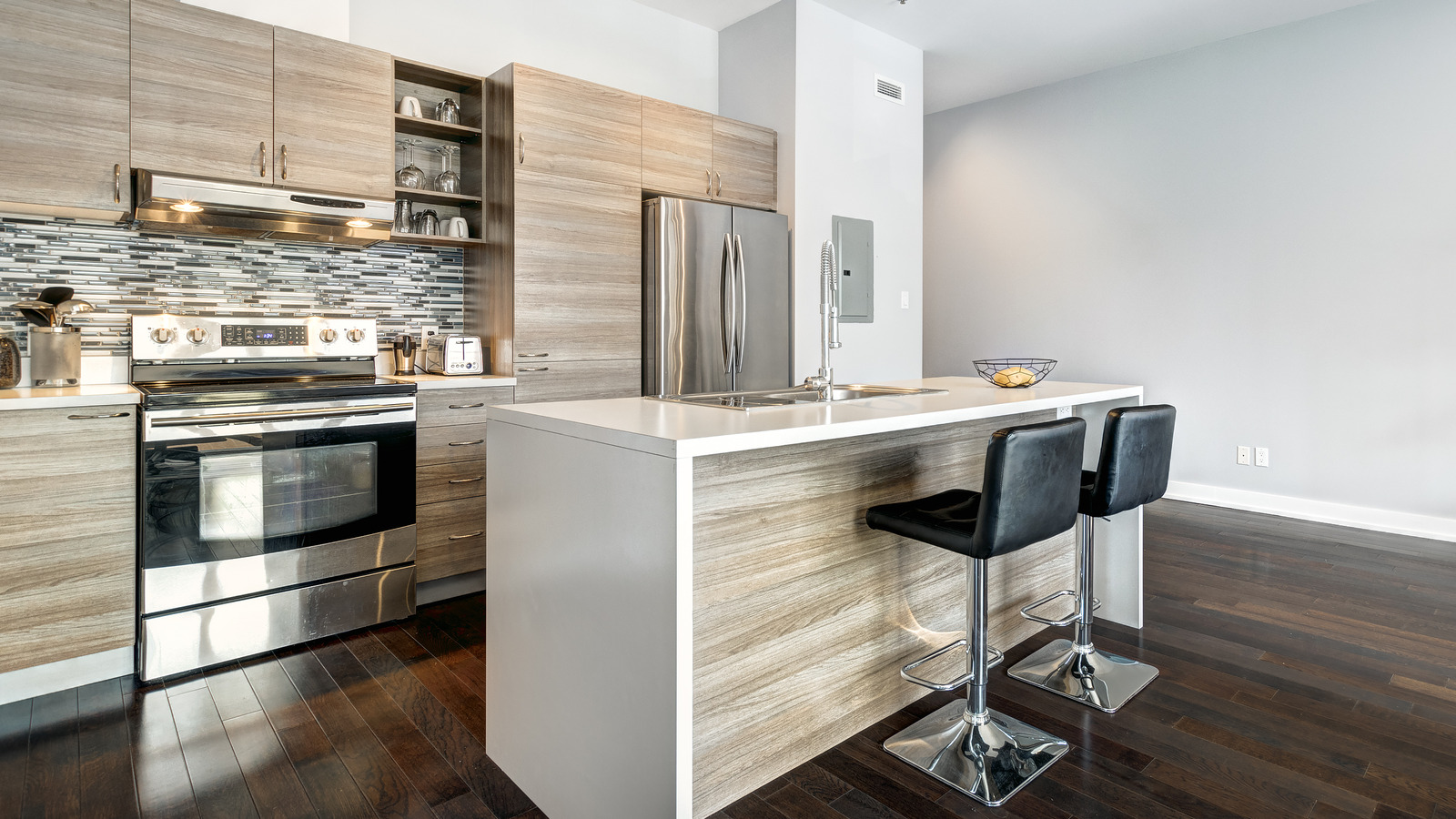Aesthetic and Design Considerations

Cabinets that don’t reach the ceiling can have a significant impact on the overall aesthetic of your kitchen. They offer a unique opportunity to create a space that feels either more spacious or more intimate, depending on your design choices.
Impact on the Visual Feel of the Kitchen
The visual impact of cabinets that don’t reach the ceiling is multifaceted. They can create a sense of openness and spaciousness, especially in smaller kitchens, by drawing the eye upward and minimizing the feeling of being boxed in. This is particularly true when paired with lighter color palettes and strategically placed lighting. However, they can also create a more intimate and cozy feel, especially when used in conjunction with darker colors, wood finishes, and accent lighting.
Practical Advantages and Disadvantages: Kitchen Cabinets That Don T Reach Ceiling

Deciding whether to go with cabinets that reach the ceiling or stop below it is a personal choice based on your needs and preferences. There are pros and cons to consider, and ultimately, the best option depends on your kitchen’s design, your lifestyle, and your storage requirements.
Accessibility
Accessibility is a key factor to consider when deciding whether to go with cabinets that reach the ceiling. Cabinets that stop below the ceiling can be more accessible, especially for people who are shorter or have limited mobility. This is because you won’t have to reach up as high to access items stored in the upper cabinets.
- Lower cabinets are easier to reach, making it simpler to retrieve items and reducing the risk of strain or injury.
- They can be especially beneficial for individuals with mobility limitations or those who prefer a more comfortable reach.
Cleaning
Cleaning can be a significant consideration when choosing between cabinets that reach the ceiling and those that stop below. Cabinets that don’t reach the ceiling can be easier to clean because you can easily access the top of the cabinets.
- The space above the cabinets is easier to clean, eliminating the need for specialized cleaning tools or ladders.
- Dust and grime buildup are minimized as you can easily wipe down the exposed area.
Showcasing Decorative Elements
The space above cabinets that don’t reach the ceiling can be used to showcase decorative elements, such as artwork, plants, or decorative items. This can add a touch of personality and style to your kitchen.
- You can create a visual focal point by displaying decorative items or artwork that complements the kitchen’s design.
- The open space allows for the integration of lighting elements to highlight decorative items and enhance the ambiance.
Dust Accumulation
One of the main disadvantages of cabinets that don’t reach the ceiling is that the space above the cabinets can accumulate dust. This can be a problem if you are prone to allergies or if you have a lot of open shelving.
- Dust can accumulate in the open space above the cabinets, requiring regular cleaning to maintain a clean and healthy environment.
- It can be challenging to clean the top of the cabinets effectively, as it requires reaching and potentially using a ladder.
Wasted Space
Another disadvantage of cabinets that don’t reach the ceiling is that you may be wasting valuable storage space. The space above the cabinets can be used for storage, but it can be difficult to access without a step stool or ladder.
- The unused space above the cabinets represents lost storage potential, especially in kitchens with limited cabinet space.
- Accessing items stored in this space can be inconvenient and require additional tools or equipment.
Open Shelving or Decorative Elements, Kitchen cabinets that don t reach ceiling
If you choose to have cabinets that don’t reach the ceiling, you have the option of using open shelving or decorative elements in the space above. Open shelving can be a great way to display your favorite dishes or cookbooks, while decorative elements can add a touch of personality to your kitchen.
- Open shelving can provide easy access to frequently used items, while also creating a visually appealing display.
- Decorative elements, such as artwork, plants, or decorative items, can add a personal touch and enhance the aesthetic appeal of the kitchen.
Maximizing Storage
There are several ways to maximize storage with cabinets that don’t reach the ceiling. One option is to use vertical storage solutions, such as stacking bins or baskets. Another option is to use the space above the cabinets for infrequently used items, such as seasonal dishes or extra linens.
- Utilize vertical storage solutions, such as stacking bins or baskets, to optimize space and maximize storage capacity.
- Store infrequently used items in the space above the cabinets, freeing up valuable lower cabinet space for everyday essentials.
Considerations for Different Kitchen Layouts

Cabinets that don’t reach the ceiling can be a stylish and practical choice for various kitchen layouts, offering a unique aesthetic and maximizing space. Their adaptability makes them suitable for kitchens of different sizes and ceiling heights. Let’s explore how these cabinets work in different kitchen configurations and how to incorporate them effectively.
Small Kitchens
In small kitchens, cabinets that don’t reach the ceiling can help create an illusion of spaciousness. They can make the room feel less cramped and visually lighter.
- Open Shelving: Consider using open shelving above the upper cabinets to display decorative items and create a more airy feel. Open shelving can also be a practical way to store frequently used items, making them easily accessible.
- Light Colors: Opt for light-colored cabinets and walls to reflect more light and make the space appear larger. Light colors can also visually expand the space, creating a more open and airy atmosphere.
- Minimalist Design: Embrace a minimalist design approach by keeping countertops clutter-free and opting for sleek, streamlined cabinet designs. This helps create a sense of order and spaciousness in a small kitchen.
Large Kitchens
While cabinets that don’t reach the ceiling are often associated with smaller kitchens, they can also work well in large kitchens.
- Accentuate Architectural Features: In kitchens with high ceilings, cabinets that don’t reach the ceiling can accentuate the architectural features and create a sense of grandeur. They can also help to break up the vast expanse of the ceiling, making the space feel more intimate.
- Create Visual Interest: These cabinets can be used to create visual interest by incorporating different colors, finishes, or materials. For example, you could use a contrasting color for the upper cabinets or incorporate a unique material like reclaimed wood for a rustic touch.
- Highlight Focal Points: In large kitchens, cabinets that don’t reach the ceiling can be used to highlight focal points, such as a large island or a dramatic window. They can frame these elements and create a sense of balance in the space.
Kitchens with High Ceilings
In kitchens with high ceilings, cabinets that don’t reach the ceiling can help to create a more balanced and intimate feel. They can also provide a practical solution for reaching items stored in upper cabinets.
- Ladder or Step Stool: Consider providing a ladder or step stool for easy access to items stored in upper cabinets. This can be a practical and stylish addition to the kitchen, especially in kitchens with high ceilings.
- Open Storage: Utilize open shelving above the upper cabinets for decorative items or frequently used items. This can help to break up the visual expanse of the ceiling and add a touch of personality to the space.
- Decorative Elements: Incorporate decorative elements above the upper cabinets, such as artwork, mirrors, or plants, to create visual interest and personalize the space. This can also help to draw the eye upwards and make the ceiling feel less overwhelming.
Kitchen cabinets that don t reach ceiling – Leaving a gap between your kitchen cabinets and the ceiling can create a sense of openness and airiness, but it also presents a design challenge. Choosing the right backsplash is crucial, especially with maple cabinets, which can range from warm honey tones to rich, reddish hues.
A guide to kitchen backsplashes with maple cabinets can help you find the perfect match. A contrasting backsplash can highlight the gap, while a coordinating one can blend it seamlessly, creating a unified look that complements your cabinets and overall design aesthetic.
Kitchen cabinets that don’t reach the ceiling can leave a gap that collects dust and makes cleaning more difficult. This reminds me of the challenge of creating a cohesive color scheme in a room, like a teal and pink bedroom , where the right shades and accents are crucial to achieving a harmonious look.
Similarly, the space above kitchen cabinets can be utilized for decorative storage or even a small open shelf for frequently used items, adding both functionality and visual appeal.
